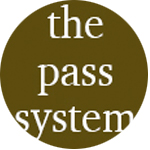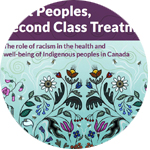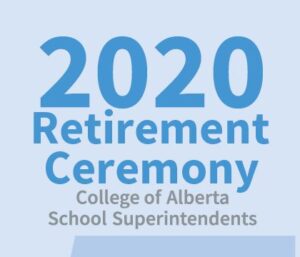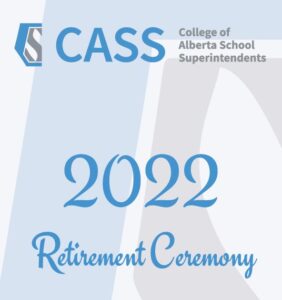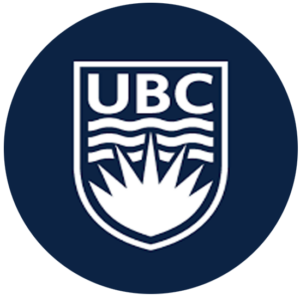Laws and Policies
In this section, you will learn about some of the laws and policies aimed at the assimilation, colonization, and genocide of Indigenous Peoples in Canada.
Introduction
Since time immemorial, Indigenous Peoples have had complex systems of law and governance to manage their societies. Indigenous law refers to the distinct systems of customs and traditions that governed Indigenous societies. These systems varied from Nation to Nation and managed political, economic and social life.1 Until contact, and for some time after, Indigenous law and governance contributed to flourishing Indigenous societies that coexisted with one another and all of Creation. However, the government of Canada outlawed Indigenous governance systems by forcing policies such as the Indian Act upon Indigenous Nations.
Genocide
The British Crown and, later, the government of Canada created policies and laws that have suppressed Indigenous Peoples. Pamela Palmeter says that “The primary objective of early Indian policy was to ensure the eventual disappearance of Indians — a goal which has not changed in hundreds of years.”2 Policies have been aimed at assimilation, colonization, and genocide. Assimilation is the process of absorbing one cultural group into another. This concept is closely tied to colonization, which is the process of settling among and establishing control over the Indigenous People of an area. Genocide is defined by the United Nations as “any of the following acts committed with intent to destroy, in whole or in part, a national, ethnical, racial or religious group, as such:
- Killing members of the group;
- Causing serious bodily or mental harm to members of the group;
- Deliberately inflicting on the group conditions of life calculated to bring about its physical destruction in whole or in part;
- Imposing measures intended to prevent births within the group;
- Forcibly transferring children of the group to another group.3
Colonization
Policies foreign to Indigenous Peoples were forced on sovereign nations and designed to control and nearly extinguish Indigenous Peoples within approximately 500 years.4 In State of First Nations Learning, Marie Battiste and Sheelagh McLean explain,
For FN people, colonization is not just a legacy of the past, but it continues to manifest itself in contemporary society every day. The Eurocentric foundations of colonization are solidly entrenched in the political, social, economic, educational, and spiritual frameworks that continue to marginalize and encroach on FN [First Nations] knowledge, belief systems, and way of life.5
Injustice
Injustice towards Indigenous Peoples of this land began long before Canada became a nation, and it continues today. Laws and policies aimed at assimilation, colonization, and genocide include the Doctrine of Discovery, Terra Nullius, and the Gradual Civilization Act (1857) which later became the Gradual Enfranchisement Act (1869). The Doctrine of Discovery originated from a series of papal bulls (decrees from the pope) in the 1400s and was based on racial superiority. It was used to justify the taking of land by European explorers by paternalistically ignoring Indigenous Peoples’ inherent rights.6 Indigenous Peoples were viewed by European explorers as non-human because they were non-Christian. As such, Europeans declared the land terra nullius, which means ‘nobody’s land.’7 While Europeans used terra nullius to claim the land now known as Canada, in 2014 the Supreme Court of Canada ruled that terra nullius never applied in Canada. Instead, the Royal Proclamation of 1763 recognized Indigenous title to the land.8 Indigenous Peoples had always occupied the land although Indigenous governance was viewed as inferior by the European newcomers.
The Gradual Civilization Act sought to assimilate Indian people into Canadian settler society by encouraging enfranchisement, which meant Indigenous people would no longer be considered an “Indian” under the eyes of the Crown. The ultimate purpose of enfranchisement (loss of Status Rights) was to encourage Indigenous people to assimilate into Canadian culture. When First Nations Peoples had their status rights stripped, it reduced the legal and financial obligations the government had agreed to when they signed treaties with sovereign First Nations. Policies were set to coerce and encourage enfranchisement. The colonial government believed many “Indians” would choose to relinquish their Indian Status and be privileged to become a British subject, embrace the rights of colonial citizenship, be considered a person, become “civilized” and not be controlled under the Indian Act but First Nations did not feel this was a privilege.9 As an “Indian” you could be forcibly enfranchised for serving in the Canadian armed forces, gaining a university education, or leaving your reserve for long periods (for example, for employment). Additionally, if an “Indian” woman married a non-Indian man or if her “Indian” husband died or abandoned her, she would lose her Status as a legally recognized Indian.
Sex Discrimination in the Indian Act tore kinship systems apart leaving generations of women and their descendants disconnected from their original inherent rights as First Nations. Women and their children were intentionally targeted to ensure a long-term agenda of assimilating and erasing “Indians” so as to secure control over “Indians” and the acquiring of their land, resources, and reduction of financial obligations that were promised through treaties.
Paternalistic Policies
The British North America Act (1867) (BNA)established the Dominion of Canada. Without consulting with Indigenous Peoples, the BNA gave power to the Department of Indian Affairs to develop paternalistic national policies that impacted Indigenous Peoples.10 The BNA gave the Parliament of Canada authority over “Indians, and Lands reserved for Indians.”11 This was just the first of many laws and policies designed to force Indigenous People to assimilate. Subsequent laws and policies include the Indian Act (1876), the Pass System, residential schools, Métis Scrip, Project Surname, the Inuit Tag System, forced sterilization, systemic discrimination, Child Welfare, Sixties Scoop, and forced relocation (see below). This introduction does not go into depth about each example listed above; please use the resource links provided below to gain deeper insights.
Forced Relocation
Forcibly relocating a population from one location to another by way of policies was a common tactic used to control the land and Indigenous Peoples. There are examples of forced relocation across Canada and are one method used to control and colonize. Reserves are the most common example of forced relocation and forced confinement. The Papaschase Band and Michel Band of what is now Alberta have both been subjected to policies that led to forced relocation from their lands as well as the loss of Indian Status.
After the Papaschase entered into an adhesion to Treaty 6 in 1877, they moved onto the land set aside for their reserve in what is now south Edmonton. By 1886, many members were enticed to take Métis scrip due to the difficult living conditions, especially starvation, they were facing on reserve. Taking scrip meant that band members lost their status and could no longer live on the reserve. Other members were persuaded by government officials to relocate to Enoch Cree Nation or other reserves. Through extralegal maneuvers by the former Interior Minister Frank Oliver, three members of Papaschase were pressured into a land surrender, and all of what had been the Papaschase reserve was sold off to third parties at cut-rate prices.12 Frank Oliver profited immensely by deceptive and aggressive tactics for his own economic prosperity and to gain control over land.
The Michel Band originally lived on the land northwest of present-day Edmonton. They entered Treaty 6 in 1878 through an adhesion. In 1880, a 40-square-mile reserve was established on the Sturgeon River. In the early 1900s, the federal government aggressively pressured the Michel Band to hand over some of their lands in exchange for agricultural tools — the tools were part of the Treaty 6 agreement that the government did not honour. In 1911, the Crown gave away 41 acres of the reserve on behalf of the Michel Band without consulting or compensating Band members — the land was sold to European settlers. In 1927, ten Michel Band members were enfranchised, reducing the number of Status Band members. In the 1940s many Michel Band members were deceptively pressured by government officials to enfranchise so their land could be sold to returning veterans. Some chose to enfranchise in order to gain the same rights as their non-First Nations comrades, as these rights were denied to Status Indians. According to some accounts, in 1958, the Department of Indian Affairs convinced members of the Michel Band that they would be models of enfranchisement for Status Indians across Canada. At this time, the entire Michel Band was enfranchised. In 1985, under Bill C-31 of the Indian Act, over 750 Michel Band members had their Status reinstated. The Michel Band continues to fight for land rights and recognition.13
Inuit also were subjected to forced relocation. In efforts to assert sovereignty over the High Arctic during the Cold War in the 1950s, the Government of Canada deceptively relocated families from northern Quebec to Grise Fiord. Families were falsely promised better living conditions and were assured of plentiful wildlife. The forced relocation proved to be difficult as families who experienced poor living conditions, depleted wildlife and hunger, and were forced to scavenge for food at a nearby military base.
By the 1960s, the settlement grew and became more established with the building of homes, businesses, and a school. In the 1970s and 80s, many Inuit returned to their home community and others chose to stay, which divided families.
In 1994, the Royal Commission on Aboriginal Peoples issued a report about the forced relocation that included historical documents and testimony from government officials. The report concluded that Inuit were not given free and informed consent to the relocation and that the federal government owed them an official apology. In 1996, the federal government established a $10 million dollar trust fund to compensate families involved in the relocation. In 2010, the Government of Canada issued an official apology for the trauma inflicted upon the Inuit.
Métis also experienced forced relocation and displacement throughout Canadian history. The Dominion Land Survey of 1827 fractioned the prairies into homesteads. These parcelled pieces of land had space between them which were for future roads or other infrastructures. The space in between was left for workers and it is within these strips of land, called road allowances, Métis would stay after they were dispossessed of their land through scrip and forced removal from traditional homelands.14 As colonial settler farmers began taking land in the prairies following the Northwest Resistance many Métis took refuge in forest areas or road allowances. 15 Although living on these parcels of land were deemed illegal by the government, the Métis have always maintained their Indigenous sovereignty and inherent rights to this land. The Métis became known as the Road Allowance people ,essentially being forced to be homeless on their own lands.
Métis have continued to survive and thrive despite forced relocation, displacement, dispossession, and persecution by Euro-Canadian government and settlers since the 1800s. Métis in Alberta today live across the province and in Métis Settlements unique to Alberta. One way to learn more about the creation of Métis Settlements and other laws and policies relating to Métis is by accessing and connecting with Rupertsland Education.
Effects
These laws and policies had and continue to have detrimental mental, physical, spiritual, and emotional effects on Indigenous Peoples. They have caused first-hand and intergenerational trauma. Not only do these laws and policies affect Indigenous Peoples, but they have been normalized into the mental landscapes of Canadian society contributing to continued racism and injustices towards Indigenous Peoples. In their book,In First Peoples, second class treatment: The role of racism in the health and well-being of Indigenous Peoples in Canada, Dr. Billie Allan and Dr. Janet Smylie explain;
Racism has played a foundational role in the development and maintenance of the Canadian nation state. The colonization of Indigenous lands and Peoples was fueled by racist beliefs and ideas about Indigenous Peoples, values, ways of knowing and being, customs and practices. These race-based beliefs served to justify acts of racial discrimination, including violence, cultural genocide, legislated segregation, appropriation of lands, and social and economic oppression enacted through such policies as the Gradual Civilization Act and the Indian Act. 16
Policies and practices emerging from imperialistic and colonial ideologies have been extremely destructive to the health and well-being of Indigenous Peoples, cutting across the broad spectrum of social determinants of health, impacting access to education, housing, food security, employment and health care, and permeating societal systems and institutions that have profoundly impacted the lives and well-being of Indigenous Peoples including the child welfare and criminal justice systems.17
Anti-Indigenous racism is embedded into systems and mindset of many Canadians. Laws and policies aimed at superiority over Indigenous Peoples and their lands helped to pave the way for settlers’ justification of land grab and inferior treatment of Indigenous people.
Justice
The Indian Act made it illegal for ‘Indians’ to form political groups or work with lawyers to contest laws and policies being forced upon them. When leaders such as Louis Riel and Chief Poundmaker attempted to assert their people’s rights and stand up for peace and justice, they were imprisoned or hanged. Yet even decades of the Government of Canada attempting to remove Indigenous Peoples’ inherent rights has not stopped the fight for justice. Most recently the Canadian government exonerated Chief Poundmaker for his role in the Northwest Resistance as an act of reconciliation.17
Yet there is much more that needs to be done for reconciliation to truly be felt by Indigenous People. There are still many laws and policies aimed at demeaning Indigenous Peoples that have been contested throughout our historical and current times. The Indian Act has been amended numerous times and First Nations, Métis and Inuit and allies continue to seek justice, peace, and their inherent rights. Examples of some specific cases include the Jordan’s Principle, Shannen’s Dream, McIvor Case, Mikisew vs. Canada, Siksika Nation Land Claims, Lubicon Lake Land Claim, Blood Tribe vs. Canada, Bill C-31, Bill S-3, The Descheneaux Case, Daniels v. Canada (2016), R vs Powley (2003) Métis Settlements, and The Manitoba Métis Federation vs. Canada (2013).
The above are only a small portion of examples of past and current court cases relating to land claims, Treaty fulfilment, and discrimination. Indigenous citizens face discrimination and unjust treatment within everyday existence. Examples can be found in past and everyday news headlines; from the murder of Métis hunters; the arresting of a First Nations man and granddaughter for simply trying to open a bank account; a trailer hitch being thrown and contributing to the death of First Nations woman who was simply walking on a sidewalk; lack of inquiry into youth deaths in Thunder Bay; and an Inuit man being denied health care services thus contributing to his death. The list is long and although strides are being made to dismantle
systemic and everyday anti-Indigenous racism and injustice, the education system must be a part of implementing the TRC’s calls to action to ensure a more peaceful future for all Canadians.
Acknowledgment and Awareness
Acknowledgment and awareness of attitudes, policies, and laws projected upon Indigenous Peoples at the hands of others’ ideas of prosperity and success need to be made apparent in our educational paradigms at all levels. Educator Yatta Kanu says that “teacher education programs have to address colonialism and racism as well as [Indigenous Knowledge]”.18 Pamela Palmeter goes further when she says,
Permanent and substantive change in Canadian law and policy is needed so that Canada can get on with the business of true reconciliation (redress and restitution) and Indigenous Peoples can move forward with healing, rebuilding their families, communities, and Nations, and enjoying the good life as they themselves defined it — the kind of freedom and liberty that so many Canadians get to take for granted.19
Negative attitudes, policies, and laws designed to erase Indigenous Peoples’ identity have contributed to our resilience, and as we move forward, we will continue to flourish.
To read more about these laws and policies, please consult the ATA Stepping Stone Concepts and Policies of Assimilation as well as the resources listed below.
Reflection
1. How does an understanding of some of the laws and policies enacted by the Crown and Canadian government help non-Indigenous Canadians understand the contemporary realities faced by many Indigenous Peoples in Canada today?
2. As a system leader how are you establishing the structures and providing resources for your district’s staff, students and community to learn the truth about the laws and policies that have and continue to impact Indigenous peoples?
3. What are some of the ongoing legacies of laws and policies such as the Indian Act, forced relocation, the Pass System and residential schools that impact students, their families and communities?
4. What can leaders do to reduce and eliminate the impact of these legacies on students, their families and communities ?
5. How do these laws and policies still impact education for Indigenous Peoples today?
6. What could make the most difference to the future of this situation?
Related Resources
This document is an entry point into learning about the experiences of First Nations People who attended residential schools.
This document is an entry point into learning about the experiences of Métis people who attended residential schools.
This document is an entry point into learning about the experiences of Inuit who attended residential schools.
This document delves into some of the many examples of forced relocation of Indigenous Peoples since contact.
This document explores concepts and policies such as Eurocentrism, genocide, the Indian Act (1876), the Sixties Scoop, and paternalism.
This Stepping Stone summarizes the key points of the Indian Act, a piece of legislation enacted in 1876 that continues to be in force today.
This document delves into the Sixties Scoop, the period of time where thousands of Indigenous children were apprehended from their families and communities and adopted out to largely non-Indigneous families.
These resources are interactive presentations for educators to use in their classrooms to build their own foundational knowledge about the Métis experience in residential schools, as well as a platform to use for teaching their students.
These resources are interactive presentations for educators to use in their classrooms to build their own foundational knowledge about the Métis experience in residential schools, as well as a platform to use for teaching their students.
Informative resource on key topics relating to the history, politics, and cultures of the Indigenous Peoples of Canada. A comprehensive overview of policies as well as specific details in relation to the Indian Act, Reserves, Residential School System, the Sixties Scoop, The Royal Proclamation, The White Paper and the Constitution Act are included.
A brief history of the Michel Callihoo reserve disbanded in the 1950s and their aspirations for the future.
ASBA Indigenous Advisory Circle members explore the acknowledgment of this period of Canadian history and its impact on perceptions and culture.
This workshop will examine core causes of intergenerational trauma, challenge common myths and misconceptions, as well as explore activities to foster effective relationships with First Nations, Métis and Inuit students, families and community….
This blog post provides a quick summary of some of the most outrageous components of the Indian Act.
The Pass System illuminates Canada’s hidden history of racial segregation. For over 60 years, the Canadian government often denied Indigenous Peoples the basic freedom to leave their reserves without a pass. Cree, Saulteaux, Dene, Ojibwe and Blackfoot elders of the prairie land where this took place tell their stories of living under and resisting the system, and link their experiences to today.
Celebrated Indigenous artist Alex Janvier recalls facing discrimination under the so-called pass system in the 1950s. The system required First Nations People to have written permission to travel off-reserve.
This video provides an introduction to the policy of Métis Scrip along with fraudulent practices that occurred.
Canada’s Relationship with Inuit: A History of Policy and Program Development contains many documents for further learning about the Inuit relationship with the crown.
This paper explores the role of racism in the health and well-being of Indigenous Peoples in Canada. It provides an overview of the historical and contemporary contexts of racism which have historically, and continue to, negatively shape the life choices and chances of Indigenous People in this country.
This CBC video provides a brief history of the 60’s scoop. Its harmful intergenerational impact continues today on the survivors and their families.
Learn about the forced relocation of Indigenous Peoples in Canada.
So, how and why did The Indian Act come to be? And why is it still on the books? This episode of The Secret Life of Canada explores the federal law that overhauled settler-Indigenous relations.
Canada took thousands of Indigenous children from their parents between the 1960s and the 1980s, and the effects are still being felt today.
Themes, in particular Homeland History and Métis Nation Governance. Homeland-History-Foundational-Knowledge-Themes-11.09.21-Rupertsland-Institute.pdf
This film is one of the responses of the Anglican Church’s Primate’s Commission on discovery reconciliation and justice. The purpose of this film is to respond to the calls to action by helping to provide education and insight into the racist foundations of many of our property and other laws still in existence to this day.
Shannen’s Dream, named in loving memory of Shannen Koostachin, is about making sure that First Nations children and youth have the same education opportunities as others but in ways that respect their language and culture and takes into account that they may not be starting from the same place.
The powerful story of Mary Two-Axe Earley, who fought for more than two decades to challenge sex discrimination against First Nations women embedded in Canada’s Indian Act and became a key figure in Canada’s women’s rights movement.”
Zachary Davis is a senior associate who specializes in Indigenous law. He’s giving a presentation called Métis Scrip: A Claim Against the Crown and stops by to talk more about it.
Brief overview of content that relates to Education of Indigenous Peoples
Footnotes
| 1 | Val Napoleon. “What is Indigenous Law? A Small Discussion.” University of Victoria Indigenous Law Research Unit. Retrieved from https://www.uvic.ca/law/assets/docs/ilru/What%20is%20Indigenous%20Law%20Oct%2028%202016.pdf |
| 2 | Palmater, Pamela. “Genocide, Indian Policy, and Legislated Elimination of Indians in Canada.” Aboriginal Policy Studies. Vol. 3, no. 3, 2014: 28. Retrieved from https://journals.library.ualberta.ca/aps/index.php/aps/article/view/22225/pdf_22. |
| 3 | The United Nations Office on Genocide Prevention and the Responsibility to Protect. “Genocide.” https://www.un.org/en/genocideprevention/genocide.shtml. |
| 4 | Palmater, Pamela. “Genocide, Indian Policy, and Legislated Elimination of Indians in Canada.” Aboriginal Policy Studies. Vol. 3, no. 3, 2014: 28. Retrieved from https://journals.library.ualberta.ca/aps/index.php/aps/article/view/22225/pdf_22. |
| 5 | Battiste, Marie and Sheelagh McLean. “State of First Nations Learning. Prepared for the Canadian Council on Learning (CCL), Ottawa, On, (Sept. 2005), 22. Retrieved from http://en.copian.ca/library/research/ccl/state_first_nations_learning/state_first_nations_learning.pdf. |
| 6 | United Nations Economic and Social Council. “Study on the impacts of the Doctrine of Discovery on Indigenous peoples, including mechanisms, processes and instruments of redress.” 2014. Retrieved from https://undocs.org/E/C.19/2014/3. |
| 7 | Indigenous Corporate Training Inc. “Christopher Columbus and the Doctrine of Discovery — 5 Things to Know.” https://www.ictinc.ca/blog/christopher-columbus-and-the-doctrine-of-discovery-5-things-to-know. |
| 8 | Tsilhqot’in Nation V. British Columbia, [2014] 2SCR 257. Retrieved from https://scc-csc.lexum.com/scc-csc/scc-csc/en/item/14246/index.do. |
| 9 | Indigenous Corporate Training Inc. “Indian Act and enfranchisement of Indigenous Peoples. https://www.ictinc.ca/blog/indian-act-and-enfranchisement-of-indigenous-peoples |
| 10 | Taylor, J.L., Indigenous Peoples and Government Policy in Canada. The Canadian Encyclopedia. 2016. https://www.thecanadianencyclopedia.ca/en/article/aboriginal-people-government-policy |
| 11 | Department of Justice. “British North America Act, 1867 – Enactment no. 1.” https://www.justice.gc.ca/eng/rp-pr/csj-sjc/constitution/lawreg-loireg/p1t13.html. |
| 12 | Stephanie Dubois. “I can feel my ancestors around me. CBC News. Retrieved from https://newsinteractives.cbc.ca/longform/papaschase. |
| 13 | Michel First Nation. “Our Story.” http://www.michelfirstnation.com/timeline.html. |
| 14 | CBC. Unreserved. From Scrip to Road Allowances. Canada’s Complicated History with the Metis. https://www.cbc.ca/radio/unreserved/from-scrip-to-road-allowances-canada-s-complicated-history-with-the-m%C3%A9tis-1.5100375/forced-to-live-on-roadsides-the-dark-history-of-m%C3%A9tis-road-allowances-1.5100660 |
| 15 | Indigenous Peoples Atlas of Canada. Road Allowance People. https://indigenouspeoplesatlasofcanada.ca/article/road-allowance-people/ |
| 16 | Allan, B. & Smylie, J. (2015). First Peoples, second class treatment: The role of racism in the health and well-being of Indigenous Peoples in Canada. Toronto, ON: the Wellesley Institute.p. 1. Retrieved from http://www.wellesleyinstitute.com/wp-content/uploads/2015/02/Report-First-Peoples-Second-Class-Treatment-Final.pdf |
| 17 | Trudeau, J., Statement of Exoneration for Chief Poundmaker. 2019. https://pm.gc.ca/en/news/speeches/2019/05/23/statement-exoneration-chief-poundmaker |
| 18 | Yatta Kanu. “Decolonizing Indigenous Education: Beyond Culturalism: Toward Post-cultural Strategies. Canadian and International Education Vol. 34 no. 2, Article 2. Retrieved from https://pdfs.semanticscholar.org/7458/c78ffb092ac2300efa0802711f1d48129711.pdf. |
| 19 | 2 Palmater, Pamela. “Genocide, Indian Policy, and Legislated Elimination of Indians in Canada.” Aboriginal Policy Studies. Vol. 3, no. 3, 2014: 28. Retrieved from https://journals.library.ualberta.ca/aps/index.php/aps/article/view/22225/pdf_22.30 |







